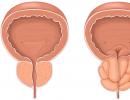How to recover quickly after exercise?
Success and achievement in any sport depends on three building blocks - nutrition, training and recovery. And if you find a lot of information about nutrition and training in any magazine dedicated to fitness, then recovery is usually spoken of more than succinctly. "Be sure to recover in order to avoid" - that's all the "expert" recommendations.
But how exactly do you recover? What are the criteria for a quality restoration? How does post-workout recovery affect athletic performance, can it be accelerated or made more effective? You will find the answers to these questions in our article.
General information
Before we talk about how to speed up recovery after exercise, let's find out what recovery is from a physiological point of view. Any workout for the body is stressful. It can be compared to a drunk bottle of vodka, broken by the liver during a fight, or other serious damage. The only difference is that with these examples, one organ suffers, but strongly. After training, damage is distributed among all organs and systems.
Recovery, or "supercompensation", is the body's response to the stress received. From a survival standpoint, the body tends to adapt to the stress it receives in order to make it less stressful. Due to limited resources, processes do not always go as they should.
There are two types of recovery mechanisms:
- Adaptive. This is ideal when the person gets enough rest, eats a lot, and is not nervous. Due to this recovery, his characteristics improve, adipose tissue disappears, muscles and strength indicators grow.
- Optimization. It occurs when the body tries to adapt to the stress received, using only internal resources. In other words, in one you will become stronger, in the other - weaker. For example, with intensive drying, the body learns to use adipose tissue more efficiently, but in order to survive, it strives to reduce the number of muscles. You will become stronger, but weaker and smaller.

How long does it take for your muscles to recover?
It is easiest to reiterate the conventional wisdom that muscles recover on average within 48 hours of training. But this is fundamentally not true and looks like the average temperature in the ward. The recovery time of muscles after training depends on many factors, including individual ones. Some of them can be influenced, others are beyond our control.
Let's list these factors:
- The intensity of the load. Obviously, if you do light workouts, then the muscles can recover in an hour, since they do not receive serious stress. The opposite is also true: if you surpassed yourself and set a record in a competition, then you don't have to approach the hardware for a week, but rather two.
- Availability of sufficient quantity. Nutrition is essential for recovery. It determines whether the recovery will follow an adaptation path or an optimization path.
- Hormonal background. It is commonly associated with levels of the hormone testosterone, which is used as a doping agent to speed up and increase the rate of protein production in the body. In fact, growth hormone, peptide hormones, thyroid hormones, etc., affect muscle recovery after exercise.
- Speed . It determines how quickly your body begins the very process of regeneration after stress. The faster the metabolism, the faster the body can cope with the load.
- Somatotype. It is from here that the main division into endo-ecto- and mesomorphs originated. The somatotype of a person determines how the body and muscles react to stress, which fibers are involved, and how the body copes with stress.
- The general condition of the body. If you are in a depressed mood or have recently overcame an illness, then you will need an order of magnitude longer to recover your body between workouts.
How long does the body need?
How to quickly recover after training in the absence of serious stress in the form of overtraining, artificial, dehydration.

The body needs at least two days to fully recover between hard workouts. This is due to the fact that during training, the body must reconfigure its systems under a heavy load:
- Increase hormone levels.
- Optimize resources for recovery processes.
- Establish the work of neuromuscular synapses.
- Compensate for the calorie deficit.
- Improve the work of the heart muscle.
- Eliminate the consequences of an adrenaline surge.
Interesting fact: any work with weights in the amount of 70 to 90% of a single PM, forces our body to produce hormones of the adrenaline group. Partly because of this, people find it easier to work with lower weights for more reps afterwards. This principle is the basis of the "striptease" lifting training program, in which a person first works with the maximum weight, and after each approach reduces the weight load by 5-10%.
Recovery rates
The indicators of the body's recovery after training are a large set of biochemical processes and characteristics that cannot be determined independently without a medical examination. But some basic indicators can be determined independently.
- Pulse and pressure. After training at normal intensity for 120 minutes, your heart rate should drop to at least 75 beats per minute (or below your aerobic zone). If your heart rate after training is in a large range, this indicates overtraining or chronic fatigue.
- Dream. If your workouts are done well, you shouldn't have trouble sleeping. As a rule, problems begin with a chronic violation of the training process. The only exception is if you did your workout less than 2 hours before going to bed.
- Well-being. If you are overtrained or not recovering enough, you will feel worse and worse with each workout.
- Progress. Possible only with full recovery. The only exception is the force plateau.
Recovery acceleration techniques
Do I need to take something to recover from a workout? With the right approach using fast recovery techniques, you don't need supportive pharmacology and sports nutrition products. Just look at the table with ways to speed up recovery.
| Method / technique / factor | Influence on the body | Effects on muscles |
| Emotional relief | Emotional unloading implies active endorphin stimulation. This type of emotional unloading allows you to stimulate the production of pleasure hormones: and. This, in turn, will reduce the effect of stress on the body's regenerative capacity. | Under the influence of endorphin, muscles relax faster, which allows blood to circulate freely in the damaged areas, accelerating physical regeneration. |
| Complete rest | Complete rest is an ideal restorative method, which, due to the modern rhythm of life, is not available to everyone. With complete rest, the body, as well as during sleep, optimizes all resources for a speedy recovery. | With complete rest, the recovery processes in the body will take place somewhat faster, but the intensity of super recovery, which makes the athlete stronger and more enduring, will be much lower. |
| Massage is a great endorphin stimulant. In addition, the effect on the lymph nodes and nerve points can significantly improve the effectiveness of the body's recovery from stress. | Physical stimulation stimulates blood flow to damaged areas to accelerate recovery processes in muscle tissue. | |
| Increase in protein in the diet | An increase in calories and protein in particular is a kind of stress for the body, so it is important to select nutrients that will not overload the gastric system. An excess of protein allows you to more quickly stabilize the work of most systems in the body. | All muscle tissue consists of (which are part of the protein). The more amino acids that are free for building muscle, the faster and better they will recover. |
| Thermal impact | Similar to massage. | Similar to massage. |
| Increased sleep | Sleep is an integral part of rest and recovery, as it allows you to reboot all systems and channel free resources into an early recovery from stress. | During sleep, the main and occur. If you don't get enough sleep, catabolism will prevail over anabolism. |
Additional incentives
So, it is impossible to drastically accelerate the recovery processes, but faster recovery after training can be obtained through the use of sports nutrition products:

- (tribulus, etc.)... Increases the natural production of male hormones, which increases the synthesis of building proteins. Reduce recovery time between workouts by 20-25%.
- . When used correctly, they accelerate tissue regeneration. It is important to give a full 24 hours of rest when using nitrogen donors, as the nervous and hormonal systems may simply not have time to recover in such a short period.
- Adaptogens. Depending on their class, they can affect both tissue regeneration and the general state of the central nervous system.
- Vitamin and mineral complexes. Supporting the body with essential trace elements accelerates the body's recovery.
Which of these should you drink after training for recovery? Primarily vitamins and minerals. Donators and nitrogen testosterone stimulants are taken in a course, usually in the morning. And adaptogens - only in accordance with the instructions.
How do you know that the recovery has passed?
You can tell if your recovery from a hard workout has been successful by looking at one simple thing. This is an emotional state. With the right training regimen, you have a desire to get additional physical activity after some time. You will feel refreshed and energized. You can also use barbell weights to determine how your recovery went from a previous strength workout. If you can easily lift weights that seemed too heavy for you in the last workout, then the recovery was successful.
To correctly predict your progress and not to overdo it in training, keep a training diary that will help you determine how well you have recovered from the last
Outcomes
From a medical point of view, professional competitive crossfit prevents athletes from progressing and recovering normally after training. But do not forget that athletes often scale the load for themselves. And even if they train 2 times a day, they do the most difficult workouts no more than 2 times a week.
At the same time, CrossFit stars use the entire arsenal of sports nutrition and supportive pharmacology. This makes the body recover faster and better.
Remember these simple rules if you want to fully feel and develop in CrossFit:
- Keep a training diary.
- Eat a healthy diet.
- Always focus on your well-being: if you think that you are not ready to perform this or that WOD today, inform the trainer about it.
- Use sports nutrition for recovery.
And remember, recovery is not only about muscles, but also about the rest of the body's systems. Don't take risks and give your body more time to rest - this will allow you to progress much faster.






